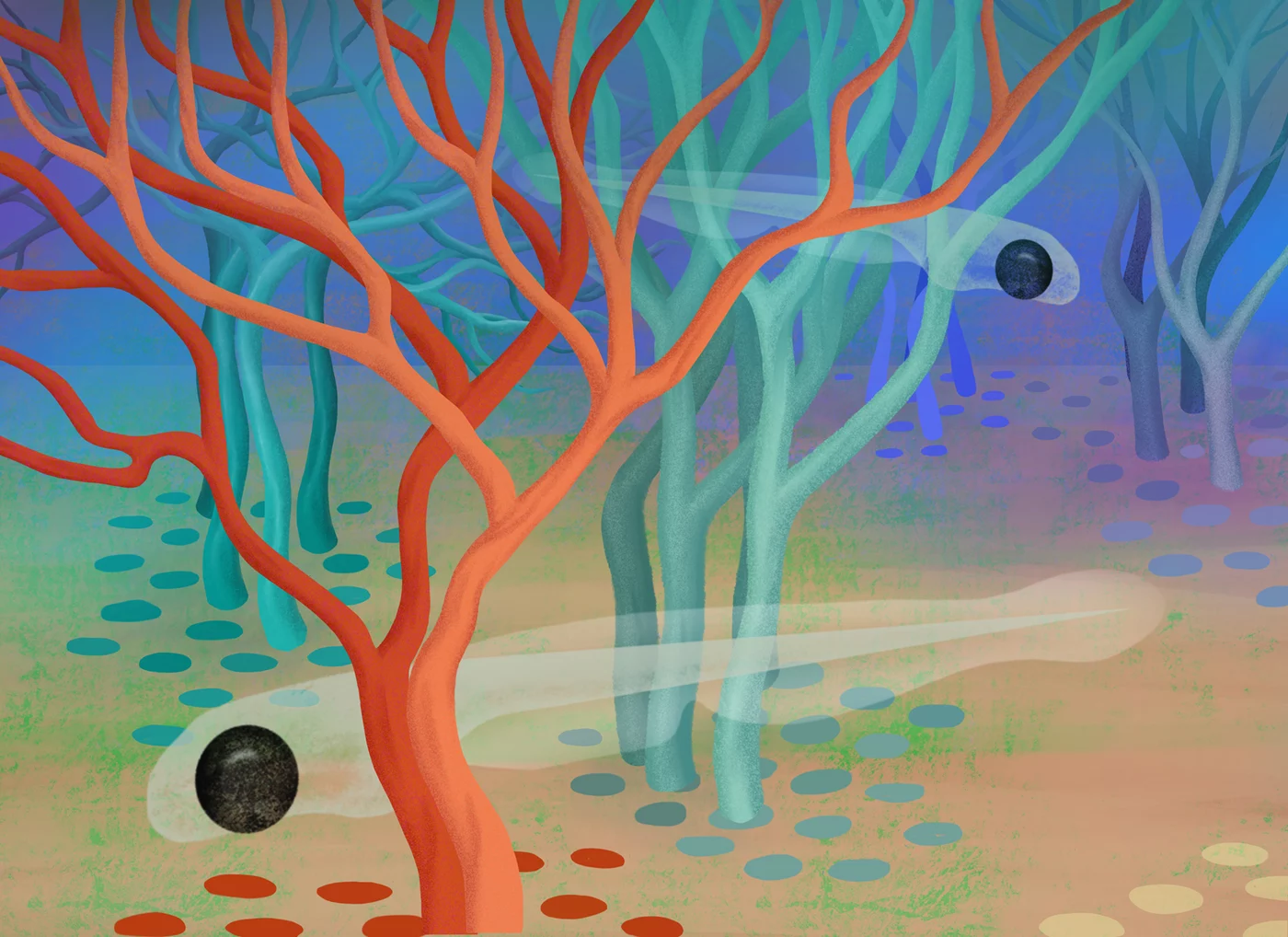Tracing the many paths of vision

Retinal ganglion cells (RGCs) are the bottleneck through which all visual impressions flow from the retina to the brain. A team from the Max Planck Institute of Neurobiology, University of California Berkeley and Harvard University created a molecular catalog that describes the different types of these neurons. In this way, individual RGC types could be systematically studied and linked to a specific connection, function and behavioral response.
When zebrafish see light, they often swim towards it. Same with prey, although the signals are entirely different. A predator, on the other hand, prompts the fish to escape. That’s good, because a mix-up would have fatal consequences. But how does the brain manage to react to a visual stimulus with the proper behavior?
Optical signals are generated by photons that bombard the retina of the eye. Neurons in the retina collect and process these impressions. While doing so, the retina focuses on the important details: Is there contrast or color? Are there small or large objects? Is something moving? Once these details are filtered out, retinal ganglion cells (RGCs) send them to the brain, where they are translated into a specific behavior.
As the only connection between the retina and the brain, RGCs play a central role in the visual system. We already knew that specific RGC types sends different details to different regions of the brain. However, it has been unclear how RGC types differ on the molecular level, what their respective functions are, and how they help to regulate context-dependent behavior.
